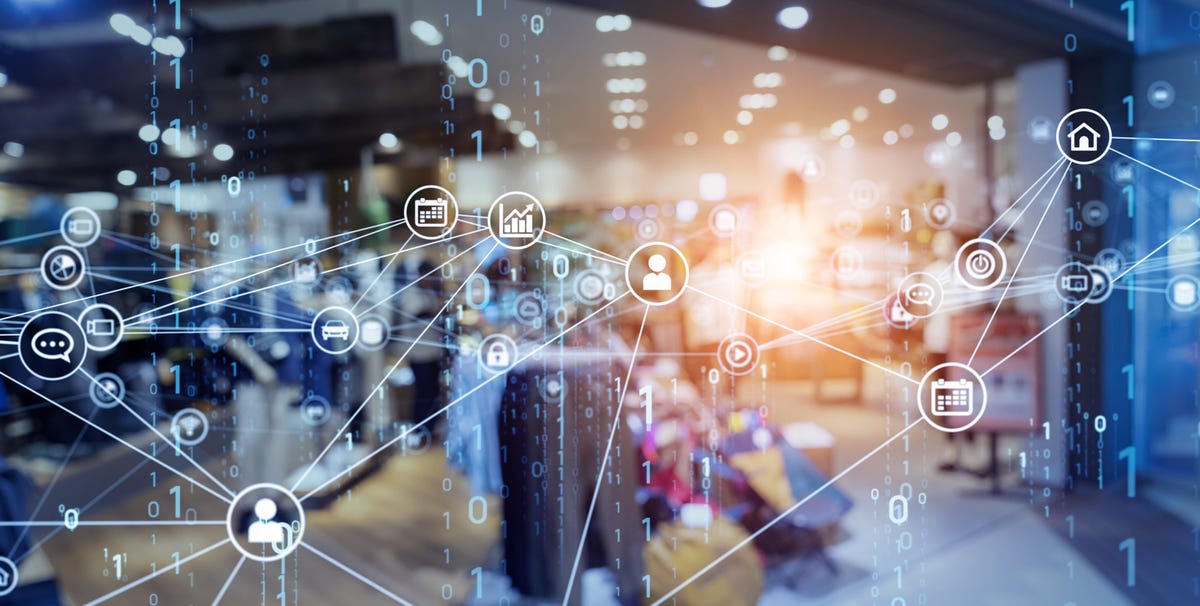
By Andy Pandharikar, CEO and founder of Commerce.AI, powering product innovation with the largest product data platform.
getty
American innovation is slowing down.
As the Center for Strategic and International Studies reports, “Whether measured in terms of triadic patents (patents filed in the United States, Europe, and Japan), most available measures of productivity, or even startup company creation, the United States’ trademark innovative spirit has been gradually dampening for decades.”
AI can help resolve these issues and bring back America’s waning innovation. In the recent NSCAI report, the committee recommends specific actions to the president and Congress, including supporting semiconductors and other strategic industries. The report missed one key area: AI-enabled commerce.
As the CEO and founder of an AI-driven commerce platform, I see a myriad of ways AI can boost innovation and revolutionize the commerce industry.
Product Innovation
Product innovation is crucial to boost productivity and generate new jobs.
As the Boston Consulting Group explains, AI has the potential to automate repetitive tasks, free up employee time for more strategic work and even create jobs. More specifically, AI can strengthen product innovation by automating market research and even product ideation.
MORE FOR YOU
Market Research
AI can strengthen market research by providing a more objective analysis, which can help product teams avoid the biases that affect human researchers.
This wouldn’t be an entirely new challenge for American innovators, as many companies have already turned to AI to solve problems in these areas. In fact, my company has recently released AI-powered market reports across 10,000 product categories, which would be an immeasurably arduous effort if done by humans.
AI can help accelerate market discovery by automating the process of researching, analyzing and experimenting with data. As Niraj Dawar writes for Harvard Business Review, “Traditional market research may be supplanted altogether by the intelligence about consumers’ actual behavior…”
Machines can quickly analyze billions of product data points for relevant information and then summarize those findings and link them together into a coherent narrative about a market opportunity. Traditionally, this process would require teams of market researchers to comb through the data they find most important, as it’d be impossible to manually look through all the product data that’s available. With AI, these limitations are removed, and big data can be analyzed and processed in real time.
Product Ideation
AI can even strengthen product ideation by identifying patterns in product ideas, in order to generate new ones.
For example, at my company, we’re building AI features based on large language models that have scanned billions of data points in order to generate product ideas. A user can enter desired features for a given product category, and the AI will come up with product ideas, from robot food delivery to 3D-printed accessories.
While these tools won’t replace human creativity, they can help augment it and get our creative gears turning. As a result, American companies can become more competitive and successful— not only at home but also abroad.
Manufacturing
AI can be used to revitalize American manufacturing, providing new jobs while also spurring economic growth. The combination of new technologies like robots, 3D printing and advanced materials has led to a lot of excitement about the potential for reshaping U.S. manufacturing over the coming years. Indeed, additive manufacturing is expected to be a $51 billion industry by 2030.
A report from Deloitte highlights the potential impact of AI on manufacturing in a number of ways. For example, it states that robotic process automation software could save up to 52% of organizational capacity, freeing up time for more strategic work.
Logistics
The U.S. has long led the world in developing new ways of moving goods around efficiently and effectively, with cutting-edge logistics. Two of the world’s biggest companies — Walmart and Amazon — can be seen as logistics firms.
Today, AI could be used to help companies identify the most efficient routes for trucks or trains to take from factories to distribution centers. This would allow companies to save money by using existing infrastructure rather than building new transport lines.
AI can also be used to develop more sophisticated models of consumer demand so that companies know exactly how much product they will need at any given time and then ordering accordingly.
Customer Experience
How well a product performs in the market depends on many factors, including its design, marketing strategy and distribution channels. But ultimately it comes down to one thing: customer experience.
The best way to understand how AI can help companies improve their customer experience is to look at the example of a company like Google. Google has been using AI for years to power its search engine and other online services. And of course, it is applying this technology to its core consumer business: helping customers find information.
In 2016, Google introduced a new product called Google Assistant, which uses machine learning and natural language processing (NLP) technologies to answer questions and perform tasks on users’ behalf. This kind of personalized response is one key benefit of using AI for customer service: It allows companies to provide better service by tailoring responses based on individual users’ preferences and needs rather than following a script that might not be relevant for every situation.
But there are many other ways in which AI can help companies deliver better customer experiences through automation, such as predicting when customers will need maintenance services or even analyzing their product reviews to fuel more consumer-focused innovation.
Final Thoughts
Ultimately, AI can help renew American innovation by automating market research and product ideation, as well as assisting the whole product lifecycle from manufacturing and logistics to customer experience. Clearly, it’s time for executives to explore AI as they fine-tune their business plans. We can bring back American innovation and continue our dominance as a superpower by harnessing artificial intelligence for innovation.







